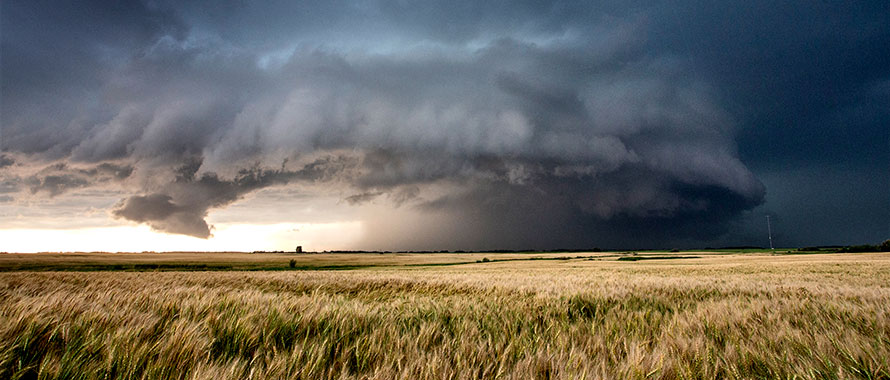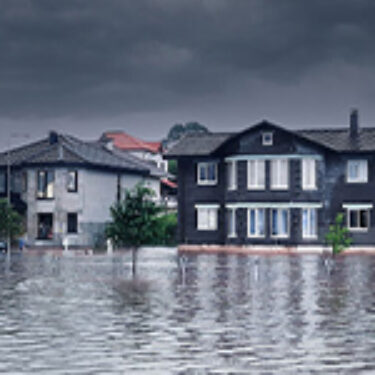Severe weather continued to break records in 2023, escalating property risks for many homeowners in the U.S. as they grapple with rising costs and a shifting insurance market. A string of disastrous tornadoes in Middle Tennessee earlier this month contributed to what appeared to be the state’s deadliest December and eighth deadliest year for tornadoes, according to reports — only adding to a record-breaking year for convective storms that caused more than $52.7 billion in insured losses as of Dec. 8.
Featured Solutions
“The storms just pop up quickly and then rapidly intensify — that is what we are seeing,” said James Jefferson, Manager, Personal Insurance, Burns & Wilcox, Oxford, Mississippi. “They are also all over the place. California had more hurricanes than Mississippi and Alabama this year, which is unusual. The risk to homeowners is just continuing to rise. It is almost like you cannot escape it anywhere in the country right now, from hurricanes to tornadoes popping up everywhere.”

The risk to homeowners is just continuing to rise. It is almost like you cannot escape it anywhere in the country right now.
With rebuilding costs on the rise, all of these factors contribute to a more challenging market for Homeowners Insurance in many areas, making it even more important for homeowners to review their policies for details on roof coverage, wind and hail deductibles, and more.
“It has a lot to do with the cost of goods, the cost of labor for contractors, and the cost of materials,” said Adam Currier, Senior Underwriter, Personal Insurance, Burns & Wilcox, Indianapolis, Indiana. “The cost of everything is going up so quickly that it is making the valuation of these losses seem so much higher than they were previously.”
Convective storms can be ‘very devastating,’ roof damage common
In Tennessee this month, severe storms and tornadoes led to multiple deaths and injuries, decimated neighborhoods and left tens of thousands of customers without power, the New York Times reported Dec. 10. According to an Insurance Journal report from October, severe convective storm losses accounted for 60% of all global insured losses in the third quarter of 2023, including at least four separate billion-dollar insured loss events. In Canada, severe thunderstorms and tornadoes during the summer of 2023 contributed to a higher number of insurance claims and increased premiums, NCPR reported in September.

The cost of everything is going up so quickly that it is making the valuation of these losses seem so much higher than they were previously.
Convective storms are among the most destructive natural disasters in the U.S. and can include tornadoes, hail and powerful straight-line winds, according to the Insurance Information Institute. They are more common in regions like the Midwest and can be “very devastating,” said Currier, who said he was “not surprised” by the new data showing more than $50 billion in insured losses from convective storms.
“With the way that applications have been coming in with wind and hail losses here in Indiana, and from some of the storm damage we have seen, that does not surprise me,” he said. “Tennessee got hit really hard. [In Indiana], there were two different communities that got hit by two tornados within six weeks of each other. One of those communities also got hit by a straight-line wind event within that time frame, as well.”
These instances demonstrate that “if they had one tornado, it does not mean that they are safe from others,” Currier said.
While Homeowners Insurance can cover physical damage to a property from hail, wind, lightning strikes, fallen trees and other storm impacts, homeowners should familiarize themselves with how their policy would respond in the event of severe weather. For example, owners are often surprised by how coverage works for roof damage, Currier said. Many policies include an actual cash value endorsement for the roof rather than replacement cost coverage, meaning homeowners could pay more than expected if their roof needs to be replaced.

The storms just pop up quickly and then rapidly intensify — that is what we are seeing. They are also all over the place. California had more hurricanes than Mississippi and Alabama this year.
“They need to make sure that they understand what the valuation on the roof is on their insurance policy,” Currier explained. “They should discuss that with their broker. It all depends on the insurance company that they are with.”
According to Jefferson, older roofs are typically insured for actual cash value, while a homeowner with a newer roof would likely purchase a policy offering replacement cost value. “The standard markets are now putting an actual-cash-value coverage on every roof over 15 years,” he said.
Understanding wind and hail deductibles
Between severe thunderstorms and hurricanes, wind and hail damage present serious risks for homeowners in the U.S. and Canada. Severe weather caused $3.1 billion in insured damage in Canada in 2022, according to the Insurance Bureau of Canada, while severe weather and climate disasters in the U.S. cost $165.1 billion last year, the National Centers for Environmental Information reported.
In response to these trends, wind and hail deductibles — which apply only to damage from these specific perils — are becoming more common on Homeowners Insurance policies, according to Jefferson and Currier.
“You are seeing the insurance market reflecting that and you are starting to see wind and hail deductibles in states where you never used to see them,” Jefferson said. “We have always had them on the Gulf Coast due to hurricanes, but we are starting to see a lot more standard companies implement those changes in the last two years, all the way as far up as Indiana.”
Wind and hail deductibles on Homeowners Insurance policies are often structured as a percentage of the home’s insured value, such as 1%, 5% or even 10%, though flat dollar-amount deductibles are also possible, Jefferson said. For homeowners who are not accustomed to this, shifting to a wind and hail deductible “could be a bit of a shock.” However, Jefferson said, “There are plenty of options out there and there are plenty of different strategies to tailor an insurance policy to exactly what you need.”
In coastal areas, higher wind and hail deductibles are more common, Currier said. “Homeowners should understand what their portion of the claim would be in the form of the deductible,” he said. “A percentage is becoming pretty standard throughout the industry. It depends on the insurance company and also their loss history.”
It is one of the primary details that homeowners should review with their insurance broker, Jefferson said. “Make sure to pay attention to changing deductibles and changing forms,” he said. “Insurance carriers are trying to make it favorable for them to insure a home. With the increase in storms and all of the new perils that are out there, they are trying to do anything they can to mitigate against big losses.”
It is an important discussion to have, Currier added, noting that some parts of the country have specific requirements for wind and hail deductibles. “When trying to decide what amount they are willing to retain as a deductible, that is the amount of the risk they are willing to retain in a wind event,” he said.
Despite risks, many homeowners uninsured for flood
Hurricanes and convective storms can lead to flood losses, yet many homeowners do not carry Flood Insurance, according to Currier. On Homeowners Insurance policies, flood is generally an excluded peril. Uninsured flood losses have been estimated between $10 billion to $17 billion per year, compared to annual insured flood losses of $8 billion to $18 billion, CNN Business reported in 2022.
Flood Insurance is available through FEMA’s National Flood Insurance Program (NFIP) or the private insurance market, where property owners can access higher limits and coverage for things like basement property, swimming pools and loss of use.

The market is very tight right now. The insurance companies are being very selective about what they are willing to insure and where they are willing to insure it, including age of roofs and wind deductibles.
“With convective storms, there could be a lot of rain involved, which can cause flash flooding,” Currier explained. “Here in the Midwest, there are a lot of areas that are not in the 100-year floodplain, and a large percentage of flood losses are not in 100-year floodplains.”
When purchasing Homeowners Insurance, property owners may find that insurance carriers today are being more selective than in the past, according to Currier.
“The market is very tight right now. The insurance companies are being very selective about what they are willing to insure and where they are willing to insure it, including age of roofs and wind deductibles,” he said. “In certain areas of the country, going to the excess and surplus lines market is almost the only option.”
Still, solutions are available, Jefferson emphasized. “The changing deductibles and the roof coverage are two of the biggest factors going into 2024 with all of the storms we are seeing, but speak with your broker,” he said. “There is always a solution out there for everybody, and Burns & Wilcox is here to help.”






